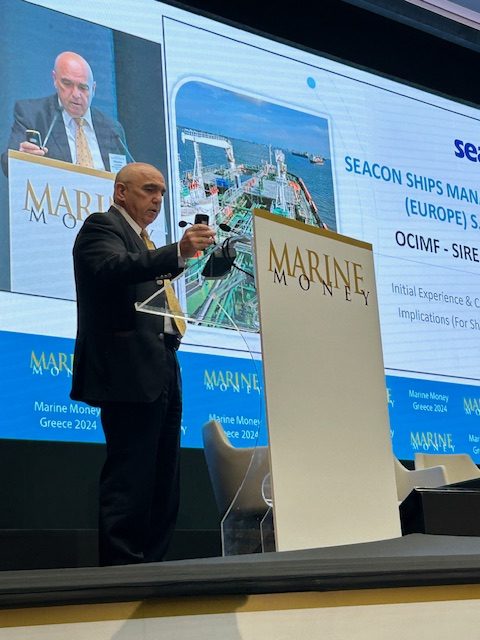
Ship Inspection Report Program (SIRE 2.0) came into force 2nd September this year, as the first major update from OCIMF since SIRE beginning in 1993, with more than 4,000 ships registered under the SIRE program, inspected on average every 6 months.
It is focused on the three factors – Hardware, procedures, and human competence (Interviewing additionally junior officers and ratings). Vessel inspections by charterers are a crucial part of tanker vetting that has effectively become every tanker owner’s ticket to trade.
The process of vetting has become excessive for tanker owners as charterers insist on performing their own inspections, using their own individual criteria instead of accessing valid, standardized inspection reports already lodged in OCIMF’s SIRE database. Charterers, including traders and brokers, have to be encouraged to use the SIRE system in the spirit that it was created by the oil majors, and to drive down the number of inspections and associated costs. This means aiming for one inspection per ship every 6 months by an accredited inspector, the report of which will be used by any OCIMF member wanting to vet that ship.
Previously, a 35 page inspection report revealed on average 5 findings per ship inspection, causing concerns among charterers. Under SIRE 2.0, a 70 page inspection report may identify 20 findings per vessel and while this may become the new norm, it will require careful discussion and adaptation within the industry and especially the charterers, who are accustomed to a certain number of observations per vessel, and will suddenly see a significant increase. Their reaction to this change remains uncertain.
From the other side, Charterers by reviewing and accepting the extensive report with photographs are becoming more responsible for the vessel they are chartering. These reports are supposed to provide the information necessary to make informed risk-based assessments and vetting decisions ahead of engaging in a charter or issuing a terminal approval. Are the Charterers who are screening a vetting report capable of understanding the criticality of each observation? Are they trained and capable of seeing behind the number of observations?
Additional cost/manpower will be needed by the Operators for the preparation of the new SIRE 2.0 inspection regime. A lot of documents have to be prepared and uploaded to OCIMF database and this needs time and effort. According to research, the additional average cost of the preparation and inspection is USD 30,000 per vessel, adding additional workload to crew. Another important issue is the training of the vetting inspectors on SIRE 2.0. This is a very delicate issue – SIRE 2.0 aims to eliminate the “personal opinion” of the inspectors by creating a clear framework and guidance for them. But from the various reports we have evaluated, it seems that this is not the case. We see inspectors without a good knowledge of the numerous requirements who are just ignoring basic rules and giving reports totally wrong. Of course, the Operator can challenge the findings but who dares to do so?
From the inspections conducted till now we see some trends that are not promising. How it is possible in 5 minutes to make a root cause analysis and talk about so difficult issues like the “human factors”? We must also note here that this revokes the basic rule of auditing i.e. the auditor just observes and not proposes.
Higher inspection costs associated with SIRE 2.0 may impact the profitability of financing projects. SIRE 2.0 provides lenders with more robust and reliable data on vessel safety and performance, enabling them to make more informed credit decisions and reduce risk exposure.
It is critical for ship finance institutions to actively engage with SIRE 2.0 and to adapt their practices to effectively utilize the program’s data and insights. By embracing this evolution, we can contribute to a safer, more transparent, and more sustainable maritime finance ecosystem.






